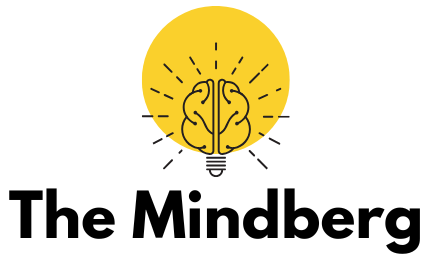Non-24-hour sleep-wake disorder (Non-24) is a rare but significant circadian rhythm disorder that profoundly impacts daily life. Characterized by a recurring disruption in the sleep-wake cycle, this condition most commonly affects individuals who are blind, although sighted individuals can also experience it.
The root cause lies in the body’s inability to align its internal clock with the 24-hour day, leading to irregular and shifting sleep patterns. As the disorder progresses, individuals find their sleeping hours moving incrementally later, eventually cycling around the clock.
The effects of Non-24 extend beyond the physical symptoms of sleep disruption, influencing emotional, cognitive, and social aspects of life. A lack of understanding about the condition often leads to misdiagnosis or stigma, further complicating management. Raising awareness about Non-24 is essential for fostering empathy and promoting effective coping strategies for those affected.
What Is Non-24-Hour Sleep-Wake Disorder?
Non-24 is a circadian rhythm disorder where the body’s internal clock, or circadian pacemaker, fails to reset to the environmental light-dark cycle. This results in a sleep-wake pattern that is longer than 24 hours, causing sleep times to drift later each day. Unlike common sleep disorders, Non-24 is not due to insomnia or lifestyle choices; it stems from biological mechanisms that regulate sleep.
This condition predominantly affects individuals who are totally blind, as they lack the light perception necessary to synchronize their internal clocks with daylight. However, some sighted people with specific circadian rhythm sensitivities may also experience Non-24. The disorder creates a misalignment between the body’s natural rhythms and societal schedules, making routine tasks increasingly difficult to maintain.
Symptoms and Diagnosis
Symptoms of Non-24 are varied but typically include difficulty falling asleep or waking at socially acceptable times, excessive daytime sleepiness, and chronic fatigue. As the sleep-wake schedule drifts, individuals may experience short periods of alignment with societal norms, only to later find themselves completely out of sync again.
Diagnosing Non-24 often requires careful monitoring of sleep patterns over weeks or months. Sleep logs, actigraphy, and melatonin level tests can help confirm the condition. Unfortunately, because symptoms overlap with other sleep disorders, misdiagnosis is common. A thorough evaluation by a sleep specialist familiar with circadian rhythm disorders is essential for an accurate diagnosis.
The Impact on Daily Life
Living with Non-24 significantly affects all areas of life, from professional responsibilities to personal relationships. The misalignment between the internal body clock and societal norms creates challenges in maintaining regular employment, participating in social activities, or adhering to daily routines. Individuals with Non-24 often feel isolated as their unpredictable sleep patterns limit their ability to engage with others.
Emotionally, the disorder can contribute to feelings of frustration, anxiety, and depression. The lack of restorative sleep exacerbates these issues, creating a cycle that is difficult to break. Moreover, the physical fatigue and cognitive impairments caused by irregular sleep further hinder productivity and quality of life.
The Role of Light and Melatonin in Circadian Rhythm
Light exposure is a critical factor in regulating the circadian rhythm. For sighted individuals, natural light helps reset the internal clock each day, aligning it with the 24-hour cycle. In contrast, individuals who are blind often lack this ability, which contributes to the development of Non-24.
Melatonin, a hormone produced by the pineal gland, also plays a vital role. It signals the body that it is time to sleep, but in Non-24, melatonin production may not align with the environmental light-dark cycle. Understanding the interplay of light and melatonin is crucial for managing the disorder effectively.
Treatment Options for Non-24
Treatment for Non-24 focuses on realigning the circadian rhythm with the 24-hour day. For individuals who are blind, melatonin or melatonin receptor agonists like tasimelteon are often prescribed. These medications aim to stabilize the sleep-wake cycle and improve sleep quality.
Sighted individuals may benefit from light therapy, which involves exposure to bright light at specific times of the day to regulate the internal clock. Behavioral interventions, such as maintaining a consistent sleep schedule, can also support better alignment. However, treatment success varies, and ongoing adjustments may be necessary.
The Psychological Toll of Non-24
Non-24’s impact extends beyond physical symptoms, often leading to significant emotional and psychological distress. Constantly shifting sleep patterns disrupt routines and create feelings of isolation. The unpredictable nature of the disorder can make long-term planning and goal setting challenging, adding to the emotional burden.
Seeking support through therapy or support groups can help individuals cope with the emotional toll. Mental health professionals familiar with chronic sleep disorders can provide strategies for managing anxiety and depression, fostering resilience in the face of ongoing challenges.
Supporting Individuals with Non-24
Support from friends, family, and employers is vital for individuals with Non-24. Understanding the condition and its challenges can foster a more inclusive and empathetic environment. Employers, for example, can offer flexible scheduling options to accommodate shifting sleep patterns.
Educating the public about Non-24 can also reduce stigma and promote acceptance. By acknowledging the disorder’s impact and encouraging open conversations, society can help those affected feel less isolated and better supported.
Future Directions in Research and Awareness
Ongoing research into the underlying mechanisms of Non-24 offers hope for improved treatments and management strategies. Advances in understanding circadian biology may lead to new therapies that address the root causes of the disorder. Additionally, raising awareness through advocacy and education is critical for ensuring that individuals with Non-24 receive timely diagnoses and effective care.
Efforts to integrate discussions of Non-24 into broader conversations about sleep health can help highlight its significance. By fostering a better understanding of circadian rhythm disorders, researchers and healthcare professionals can work together to improve outcomes for those affected.
Non-24-hour sleep-wake disorder is a complex condition that disrupts the delicate balance of the circadian rhythm, with profound consequences for daily life. Its effects extend far beyond sleep, impacting emotional well-being, cognitive functioning, and social relationships. Despite these challenges, understanding and effective management are possible through a combination of medical treatment, behavioral strategies, and social support.
Raising awareness about Non-24 is crucial for reducing stigma and promoting empathy. By fostering a deeper understanding of this disorder, society can create a more inclusive environment for those affected. Advances in research and advocacy offer hope for improved treatments, ensuring that individuals with Non-24 can lead fulfilling lives despite the challenges they face.

